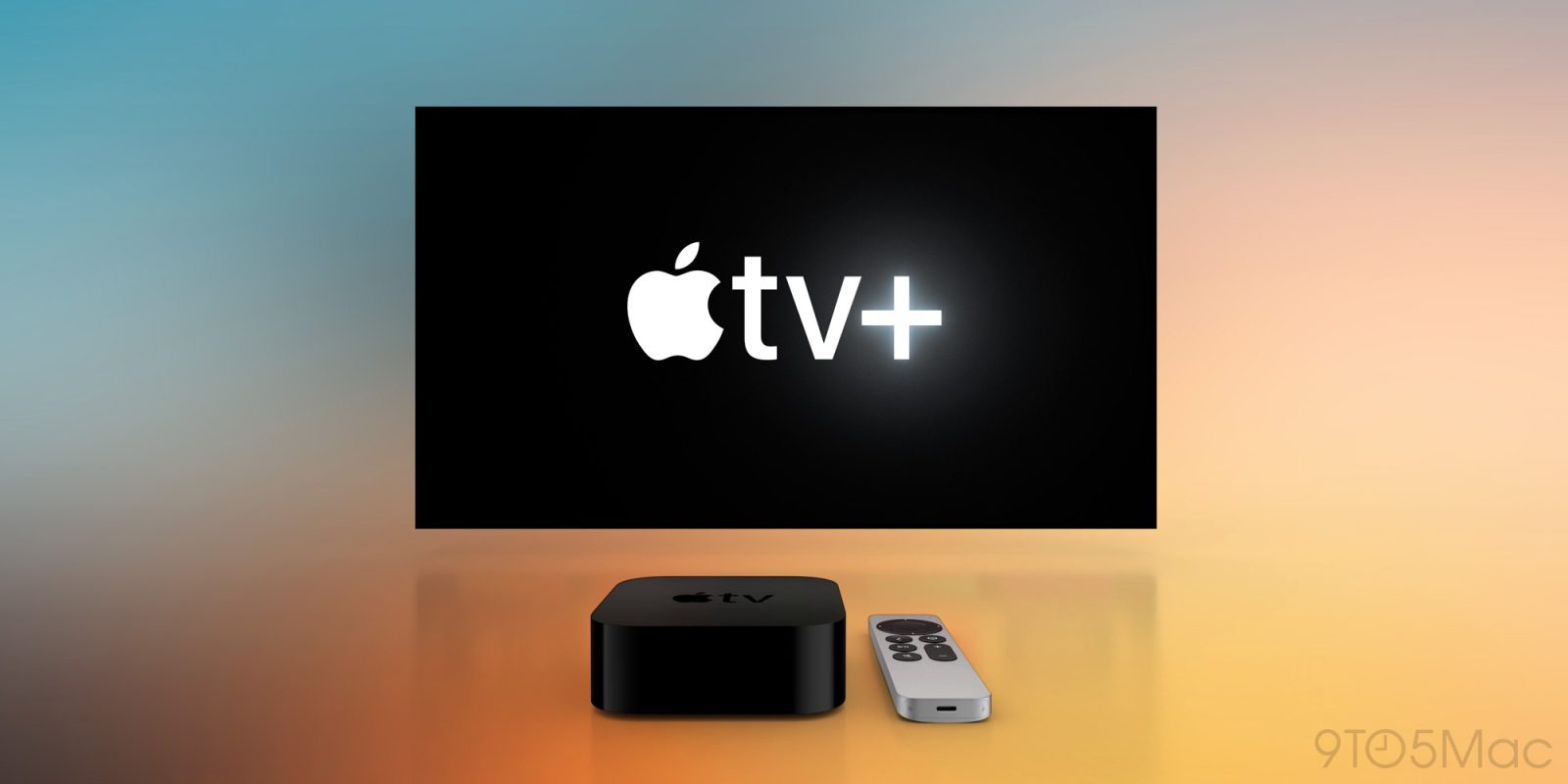Apple TV+ is gaining momentum in the United States, signaling a renewed confidence in Apple’s streaming strategy as it plans fresh original content for the rest of the year. The company used its WWDC 2024 spotlight to tease notable new content arriving on Apple TV+, including new seasons of Severance, Silo, and Pachinko. This buildup comes amid measurable gains in the platform’s market share in the US, where JustWatch-tracked data show the service advancing again in the latest quarter. The uptick underscores Apple TV+’s growing appeal and its evolving position within a crowded streaming landscape, where even small percentage shifts can influence competitive dynamics for months to come.
Apple TV+’s US market momentum and WWDC 2024
The WWDC 2024 presentation underscored Apple’s commitment to strengthening its streaming footprint with high-profile originals that aim to captivate long-term audiences. Among the most anticipated announcements were new seasons for Severance, Silo, and Pachinko, three titles that have helped establish Apple TV+ as a home for prestige storytelling. This commitment to expanding an existing slate aligns with a broader strategy to diversify content across genres, attract different viewer segments, and deepen engagement with subscribers who value quality over quantity. The timing of these reveals matters: as Apple seeks to convert one-time adopters into loyal customers, a steady stream of flagship titles can sustain retention and drive interest in renewals.
Market-share data from JustWatch, observed through late Q2 2024, shows Apple TV+ rising to a 9% share in the US streaming platform market. This marks a continuation of growth from the first quarter, when the service stood at 8% and then edged up by a percentage point. The trajectory, while not explosive, signals positive momentum in a market where the top players remain entrenched. For investors and industry observers, the implication is clear: even with a smaller catalog, Apple TV+ is increasingly capable of converting content investments into measurable audience gains. In the broader context, the platform’s 9% share places it ahead of Paramount+, which is also at 9%, while the gap to Disney+ (11%) and Hulu (10%) remains modest but meaningful.
From a strategic standpoint, Apple TV+’s growth has several dimensions. First, the platform’s performance suggests that original programming continues to act as a key driver of subscriber interest and retention. JustWatch observed that Apple TV+ has shown an overall increase in market shares and has had several original titles ranking on streaming charts during the quarter. This pattern reinforces the idea that Apple’s investments in premium storytelling can translate into higher visibility and audience engagement, even as the service competes with much larger catalogs. Second, the data illustrate a shifting balance within the US SVOD market, where Apple TV+ is moving closer to Disney+ in terms of platform size, narrowing the gap with other major players. The result is a more nuanced competitive landscape in which Apple TV+ is no longer a peripheral presence but a legitimate contender among the streaming heavyweights.
In the grand scheme, Netflix and Amazon Prime Video continue to be the dominant players, each holding about 22% of the US market share in this snapshot. Netflix has shown some growth in recent periods, but Amazon Prime Video has faced challenges in maintaining its top position. The ranking, however, remains relatively fluid at the margins, with several platforms vying for incremental gains as consumer viewing habits shift toward on-demand, original-first libraries. The full JustWatch ranking reveals the following distribution: Amazon Prime Video 22%, Netflix 22%, Max 14%, Disney+ 11%, Hulu 10%, Apple TV+ 9%, Paramount+ 9%, and Others at 3%.
Taken together, the WWDC announcements and the latest market-share data depict a US streaming ecosystem characterized by ongoing rebalancing. Apple TV+ is not yet at the very top tier, but it has established a credible channel for attracting high-quality content audiences. The combination of new seasons for acclaimed series and a measurable increase in market share signals that the platform’s content strategy is beginning to translate into durable audience gains. For stakeholders, the practical takeaway is that ongoing investments in original programming, coupled with strategic platform positioning, can yield tangible competitive advantages even when the catalog size remains smaller than some peers.
JustWatch data: Methodology, trends, and implications for Apple TV+
JustWatch serves as a market-tracking lens into how audiences allocate their viewing across streaming platforms. The data discussed here reflect a snapshot of the US market in a specific quarter, offering insights into relative performance and momentum rather than a comprehensive catalog count. The reported figures quantify each platform’s slice of the streaming market and rank platforms by both breadth and audience engagement. While Prime Video and Netflix continue to lead in terms of overall share, Apple TV+’s ascent underscores the efficiency of its content strategy in converting viewers into subscribers or re-engaged users.
One critical takeaway from the data is the speed at which the market can shift when a platform releases new or anticipated titles. Even modest gains, such as a 1% increase in quarterly share for Apple TV+, can be meaningful over time as it compounds with ongoing subscriber activity and renewals. The competitiveness of the SVOD space means that annual performance can hinge on a handful of high-performing originals, a network of distribution approaches, and the ability to reach audiences across devices. In this light, Apple TV+’s progress suggests that its content library and promotional cadence are resonating with viewers enough to push the service toward parity with platforms that have historically commanded larger catalogs.
From the perspective of platform strategy, the JustWatch data highlight several dynamics at play. First, there is a clear tiering of platforms by share, with two players at the top (Prime Video and Netflix) and a broad middle tier comprising Max, Disney+, Hulu, and Apple TV+. Paramount+ sits alongside Apple TV+ at 9%, illustrating that even mid-sized platforms can carve out meaningful footholds through distinctive programming. The data also reveal the persistent advantage of breadth; however, depth and brand alignment—especially in the prestige segment—can create durable differentiation, helping services like Apple TV+ close gaps over time. Finally, the data show that competition is not just about raw viewer numbers but about sustained engagement, episodic release strategies, and the ability to convert occasional viewers into repeat subscribers.
The implications for Apple TV+ are multi-faceted. On one hand, the market share gains validate the company’s decision to invest in a mix of high-profile originals and internationally appealing content. On the other hand, the data reinforce the importance of maintaining momentum beyond a single season or two; continued renewals, new formats, and cross-genre experimentation will be essential to sustaining growth. For viewers, the trend signals a broader, more competitive array of choices with opportunities to encounter groundbreaking storytelling across a growing number of platforms. In the balance of risks and opportunities, Apple TV+’s trajectory remains a focal point for industry watchers as the streaming wars unfold.
Original content strategy: From a compact catalog to award-winning prestige
Apple TV+ began its journey in 2019 with a measured library of original films and series, prioritizing quality over sheer volume. Today, the platform supports roughly 271 titles, a figure that stands in stark contrast to the sprawling catalog of competitors like Amazon Prime Video, which boasts tens of thousands of titles. Still, quality has proven to be a potent differentiator. Apple TV+ has not only grown in size but also in critical recognition, with its programming frequently earning prestigious awards and industry accolades. This paradox—smaller catalog, high-impact content—has become a core feature of Apple’s strategy and a compelling narrative for audiences seeking prestige and novelty on streaming.
A recent independent assessment highlighted that TV+ content has earned high marks on IMDb, reported as among the most highly rated content on the platform despite the service’s comparatively modest catalog. While IMDb ratings are just one measure of viewer reception, the trend aligns with Apple TV+’s emphasis on storytelling that resonates with audiences and critics alike. The platform’s success stories suggest that Apple’s approach to content—investing in tightly crafted, thematically ambitious projects—can elevate brand perception and drive word-of-mouth endorsement, which in turn supports subscriber growth and retention.
The thoughtful curation of original content appears to be a deliberate counterweight to the volume advantages wielded by larger platforms. Rather than chasing breadth at the expense of depth, Apple TV+ has leaned into signature series and cinematic formats that aim to travel across markets and languages. The result is a portfolio that appeals to both domestic and international audiences, which is important for a provider that seeks long-term growth beyond the initial launch period. The focus on award-caliber storytelling also helps attract talent who want to engage with ambitious material, creating a virtuous circle: acclaimed creatives produce standout work, which draws in viewers and sustains a perception of premium value.
Availability of Apple TV+ across devices is a critical part of its content strategy. The service is accessible through the TV app on iPhone, iPad, Mac, Apple TV devices, and compatible smart TVs and set-top boxes. In addition, Apple TV+ is available on the latest PlayStation and Xbox consoles, expanding reach beyond Apple-dedicated ecosystems. This cross-device presence matters for viewer accessibility, reducing friction for potential subscribers who may prefer a non-Apple interface or have a household with multiple entertainment platforms. The seamless integration of Apple TV+ with the broader Apple ecosystem also creates opportunities for bundled value propositions, loyalty, and broader ecosystem engagement, which can translate into longer subscription lifecycles.
From a content development perspective, the continued investment in original titles signals a commitment to long-term growth rather than one-off audience bursts. As the platform expands its catalog with new seasons and originals, it can diversify its appeal—from streaming drama and thriller formats to more experimental or genre-blending works. This versatility can help sustain audience interest and reduce reliance on single titles to drive engagement. The awards- and critical-acclaim trajectory further supports brand differentiation, reinforcing Apple TV+ as a destination for premium storytelling. Combined with a measured expansion of the catalog, this strategy can help the platform convert occasional viewers into regular subscribers and increase average viewing hours per user.
The global reach of Apple TV+ is another essential component of its strategy. The service is not limited to the United States; it targets a broad international audience through localized content, international co-productions, and accessible distribution. The cross-border appeal of selected titles—and the inclusion of subtitles and dubbing—enhances potential subscriber growth in non-English-speaking markets. In this context, the 271-title catalog, while modest in size, represents a curated ecosystem designed to sustain engagement across regions and languages. The emphasis on quality over quantity aligns with a global distribution approach that prioritizes audience resonance and cultural relevance across diverse markets.
Availability across devices and ecosystems: cross-platform reach and user experience
Apple TV+’s accessibility across multiple devices is a defining feature of its reach. The service leverages the ubiquitous TV app, which consolidates content and screen-time across devices. Users can access Apple TV+ on iPhone, iPad, Mac, and Apple TV hardware, as well as on compatible smart TVs and set-top boxes from vendors outside the Apple ecosystem. The inclusion of the TV app on the most recent gaming consoles ensures that a broader audience can discover and enjoy Apple’s original content without requiring a dedicated Apple device. This cross-platform strategy expands potential subscribers and improves the discoverability of Apple TV+ titles in a crowded streaming marketplace.
The broader Apple ecosystem offers potential advantages for Apple TV+. Subscribing to Apple TV+ can complement other Apple services, such as Apple Arcade, Apple Music, and iCloud. The shared sign-in experience, consistent design language, and centralized content discovery can simplify the consumer journey and lower friction in subscribing. This synergy also provides an opportunity to leverage data-driven recommendations and personalized marketing within the Apple environment, although precise data use terms will depend on user consent and regulatory constraints. The combined effect can be a more cohesive entertainment experience that encourages continued engagement with Apple’s digital services overall.
However, there are considerations tied to this cross-platform strategy. For example, broader availability outside the core Apple ecosystem may require partnerships with third-party hardware manufacturers, app stores, and platform-specific optimizations. Ensuring a high-quality viewing experience across devices, including varying screen sizes, resolutions, and streaming capabilities, is essential for maintaining a premium perception. Apple’s ability to maintain consistent performance, response times, and quality across diverse hardware is a testament to its engineering and content delivery practices. The result is a reliable, uniform user experience that supports brand trust and long-term subscriber loyalty.
In practice, the availability across devices helps Apple TV+ compete more effectively with the top streaming services, which often rely on multi-device reach and extensive catalogs. The strategy reduces barriers to entry for potential subscribers and enables flexible viewing patterns. It also supports the concept of “anytime, anywhere” streaming, which is increasingly valued by audiences who want to pick up a title where they left off across devices. The cross-device approach also supports social sharing dynamics, where households with multiple screens can enjoy synchronized viewing experiences or alternate device use depending on preference and context. All these factors contribute to a more robust platform presence and a higher likelihood of sustained engagement.
Competitive landscape and forward-looking considerations
The competitive context for Apple TV+ remains intense. The latest market-share snapshot shows Prime Video and Netflix each commanding 22% of US streaming activity, underscoring the two leaders’ entrenched positions. Max trails at 14%, with Disney+ at 11% and Hulu at 10%, followed by Apple TV+ at 9% and Paramount+ at 9%. The distribution reveals a crowded market where even platform with modest mid-year gains can influence consumer choices and brand perception. Apple TV+ has carved out a distinct niche by emphasizing high-quality originals and strategic releases, which helps it stand apart in a field dominated by catalogs and cross-service bundles.
Looking ahead, Apple TV+ faces several strategic opportunities and challenges. On the opportunity side, continued investment in original content—especially high-concept dramas, science fiction, and internationally co-produced dramas—can broaden its appeal and sustain growth. Expanding on the WWDC-driven momentum with additional seasons, spin-offs, and cross-franchise synergies could further boost subscriber interest and retention. On the challenge side, market leaders with large catalogs may leverage scale advantages to offer lower price points or more aggressive promotional campaigns, potentially eroding Apple TV+’s share trajectory. To counter this, Apple could double down on exclusive agreements, star-driven projects, and distinctive storytelling formats that translate into strong word-of-mouth and social media engagement.
Another consideration is the evolving distribution landscape. As streaming platforms explore advertising-supported tiers and different pricing models, Apple TV+ must remain competitive while maintaining its premium identity. The balance between price, value, and the perceived prestige of Apple TV+ will shape its ability to attract price-sensitive viewers without diluting brand equity. In addition, international expansion and localization will be critical for sustained growth, as global audiences increasingly influence the trajectory of premium streaming services. By maintaining a high bar for quality while widening accessibility, Apple TV+ can aim to convert current momentum into durable market share gains.
In sum, Apple TV+ is navigating a saturated market by leaning into a strategy that blends selective, acclaimed originals with a cross-device, ecosystem-friendly distribution approach. The company’s WWDC announcements, coupled with JustWatch market-share signals, depict a platform that is no longer merely a side project but a consequential player in the streaming ecosystem. As the platform adds new seasons and titles in the coming months, observers will be watching not only for subscriber counts but also for the dynamics of viewer engagement, critical reception, and brand impact. The road ahead holds potential for continued growth if Apple sustains its emphasis on quality, international reach, and a seamless user experience across devices.
Conclusion
Apple TV+ is demonstrating measurable momentum in the US streaming market, reinforced by WWDC 2024’s focus on upcoming seasons for Severance, Silo, and Pachinko. JustWatch data for the second quarter of 2024 show the service reaching a 9% market share, marking a positive step from the prior quarter and signaling that Apple’s premium original strategy is resonating with viewers. In a landscape dominated by Prime Video and Netflix, Apple TV+ has carved out a distinct position by prioritizing high-caliber storytelling and strategic content development, complemented by a cross-platform availability that broadens its reach. The platform’s smaller catalog relative to the biggest competitors is offset by a deliberate emphasis on quality, awards-worth storytelling, and international appeal, suggesting a sustainable path to continued growth.
Apple’s approach—building prestige originals, expanding in key markets, and ensuring broad accessibility across devices—positions the service as a credible alternative to the largest streaming platforms. With new seasons and titles on the horizon and a continued focus on high-impact programming, Apple TV+ stands to solidify its foothold in the US market while pursuing global expansion. For viewers, the practical takeaway is clear: a steady stream of ambitious, well-crafted content from Apple TV+ can offer a compelling value proposition beyond the catalog size. As the streaming wars continue to evolve, Apple TV+’s strategy emphasizes depth, quality, and accessibility, which together may translate into lasting audience engagement and enduring brand strength.



